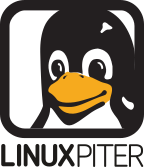How open source changing and reshaping enterprises
LVEE 2018
It is obvious that for enterprises the future is built on open source. In the last 10 years any innovation adopted in the enterprises has had its roots in open source. Cloud computing, containers, databases, new languages (node JS and GO) – they all start in open source. And enterprises starting to listen, they starting to embrace open source. Red Hat claims that 90% of fortune 500 are using Red Hat products and services. That was unheard 25 years ago.
Let’s look at 3 major trends that shape the changes between enterprise and open source in the last 2 decades.
1. Enterprise compatibility
What was enterprise compatibility 25 years ago? 25 years is important because at this time enterprises started adopting open source.
OpenSource products started finding their users because they solved real problems. At the same time closed source companies tried to block open source solutions trying to communicate the main objection: open source is risky, and it is not enterprise ready.
There are many amazing quotes from this time about open source. Bill Gates from Microsoft said: “Open Source is good for hobbies and enthusiasts…”. It was also famously said that the open source is like a free puppy, you’ve got this puppy home, you’ve got to feed it, you’ve got to train it and then you’ve got to clean up after it. But, guess what, we took that puppy home, and that puppy grew up to be a wolf, that’s got teeth and claws, and it’s got sights sit firmly on enterprise software. And it’s not going to stop.
25 years later open source is enterprise compatible. Everything has changed and enterprises now have choice that they never had before. Now the companies like NGINX propose the products available with open source, package, fully backed up with professional services, training, tested and supported. There are more things available
- Army of developers and community that grew up with open source
- open source is now proven, ready and nothing is going to stop it
- open source now is less risky than closed source (some examples with NGINX and other software)
2. Product and innovation cycle
Closed source is still stuck in 3 years product cycle (example – MS Office – known as a train that always arrives every three years). It is great for license renewals, its good for maximizing amount of money you can get from your customers, but lousy for delivering innovation.
Open source community believes that 3 years are too long to wait for innovation. Innovation is not happening in 3 year cycles, it is happening now. Open source approach is fundamentally different then the closed source. It encapsulates instant feedback from multiple sources – amateurs, professionals, students, engineers, architects, individual development companies, startups, midsize companies, enterprises, largest internet giants all over the world and delivers the changes very quickly. New ideas become materialized to the new projects, they are quickly released into the staging and stable branches at the speed enterprises are asking about it.
3. Platforms compatibility
New technologies are getting more complex and the enterprises looking for the platforms to simplify this and to reduce risk. They see it like a set of the best practices and patterns and software that works better together. And the challenge with the closed source platforms is that you are always locked in. Closed source has to protect their intellectual property, their own developers, their own engineers being tainted by other peoples IP. Fundamentally they try to lock their customers to their platform (example iTunes that don’t support Android users). This kind of lock in creates hostages, not happy customers.
Open source suggests fundamentally different approach over the platforms – it integrates with various platforms and this is part of DNA of OpenSource solutions. For example NGINX is supported on AWS, Azure, GCP, kubernetes; on premise, private cloud, containers, hybrid cloud, any kind of cloud that you want. Platform should free you, but not lock you in.
Open source is a better way to deliver the software.
Now let’s see some examples how open source products help driving the business of the large corporations.
I have experience working in well known producer of the network equipment from California Netgear Inc. This company is known more than 20 years for their famous network devices: routers, wi-fi access points, bridges and other equipment. When we take Netgear router and look to the basic firmware components of this device we can see that it uses linux kernel, major libraries: curl, openssl, gsoap. And there are UI modules Node JS, Angular JS, Apache and other components to organize effective user interface. Server side components include Spring framework, Tomcat, NGINX, MySQL, Redis and many more.
Another company that we can look at is ARLO Inc – the leading expert in cloud video systems. ARLO is located in USA, California and having more than 50% of US market. Their solutions – cloud video systems embed wide range of open source products such as Busybox, uClibc, GCC tools, Open SSL & TLS, libcurl, libjson and many others. Together these tools help defining the shape of the final product and create that amazing user experience that makes those enterprises successful.
Both ARLO and Netgear are examples of how successful business can leverage its own enterprise products by using open source technologies. The very possibility of using so many open source projects in an enterprise solution is a great indicator of maturity of open source.
If 20 years ago the company had to build the most part of its enterprise value from scratch, now the most efforts are put into the building the product from various blocks provided by open source community.
Today we can say for sure that the future of software development is with open source.
Abstract licensed under Creative Commons Attribution-ShareAlike 3.0 license
Back



































